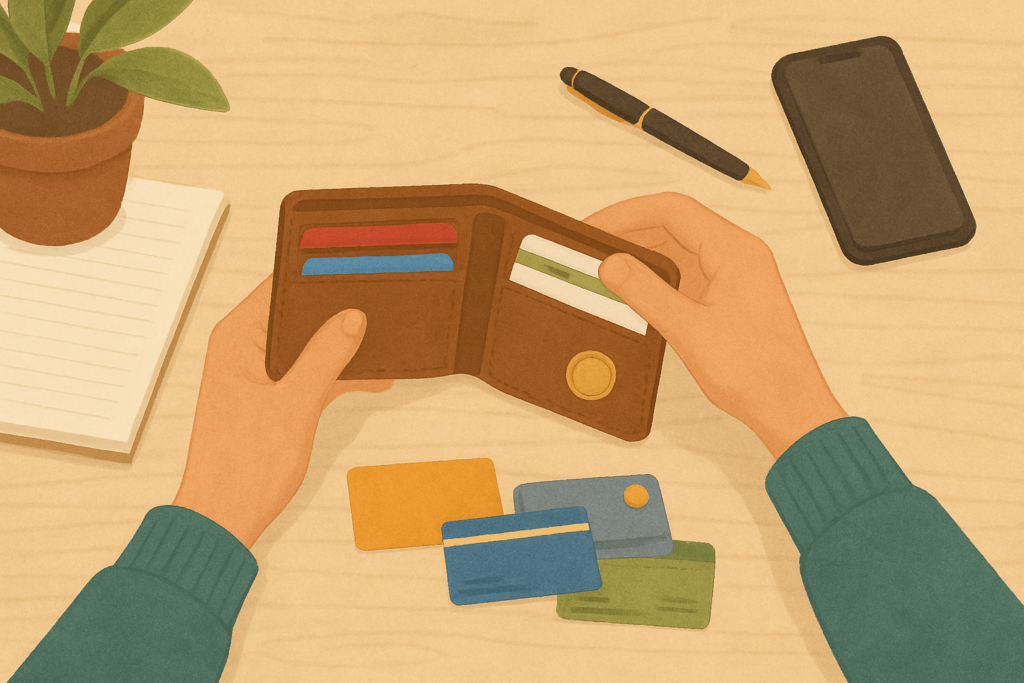There was a time when the wallet was our command center. It held everything – cash, coins, credit cards, receipts, ID cards, handwritten notes, bus tickets, and a picture of someone we loved. Its thickness said something about us. Our lifestyle, our preparedness, our attachments.
Today, the wallet is shrinking – both in size and in relevance. More and more of us leave the house with just a phone. We pay with a tap. We identify ourselves with a scan. Even loyalty cards, doctor’s appointments, and insurance documents have found their home in apps.
So what’s left in the wallet? And more importantly – what should be?
A small object, a big meaning
The physical wallet is still with us. Even if tucked away at the bottom of the bag, even if opened only once in a while. It’s no longer essential, but it holds traces of who we are. What we hold onto. What we haven’t yet let go of.
Many of us still carry things “just in case.” Business cards we haven’t looked at in years. Receipts long faded. Membership cards to places that no longer exist. Photographs that stick together with age.
And sometimes, also things we forgot were there: – A paper note from someone who meant a lot. – A safety pin. – A key that no longer opens anything.
The wallet as a mirror
Tidying a wallet is not just decluttering. It’s a symbolic act – of asking: What do I still need? What am I still holding on to? What part of my past do I carry with me every day?
There’s a strange intimacy to sorting through a wallet. It’s like flipping through a very quiet diary. Each piece of paper, each item, has its own little story. Some we’re ready to let go of. Others remind us who we’ve been.
So how do we decide what stays and what goes?
Start small. Don’t try to tackle it with pressure. Open the wallet on a clear table. Empty it. Let yourself be surprised. Then:
– Essentials only – ID, health insurance card, one or two credit cards. Anything else – pause. – Receipts – If you don’t need them for reimbursement, scan and toss. Don’t keep them as emotional clutter. – Loyalty and membership cards – If it hasn’t been used in six months, consider removing it. Most are available digitally. – Cash – Carry only what you actually use. Even that may be rare. – Photos and notes – Keep one or two meaningful items, but not everything. Take a photo if you’re unsure. – Coins – A small coin purse or a designated jar at home might work better.
Letting go is not forgetting
When we release items from the wallet, we’re not erasing memories. We’re simply deciding what we want to carry with us every day. This isn’t just physical lightness – it’s mental clarity.
Carrying less invites us to be more present. To make space in our bag – and in our mind. To say: I don’t need to carry the past to honor it.
What can the wallet teach us about life today?
We are becoming lighter. More digital. But also – sometimes – more detached. Tidying the wallet reminds us to pause. To touch. To choose consciously. To recognize that even in a digital world, we still need small, real spaces to ground us.
The minimalist mindset begins here, too – not in throwing everything away, but in choosing what matters. Even a wallet, that quiet, humble item, can become a tool of self-reflection. A space of calm amidst the noise.
And maybe, when we open it next time, it’ll remind us not just of what we need to pay – but of who we’ve become.


